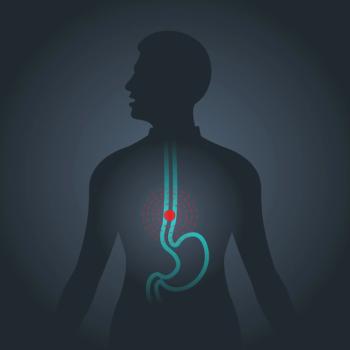
Oncology NEWS International
- Oncology NEWS International Vol 10 No 10
- Volume 10
- Issue 10
High-Volume Hospitals Better for Some Cancer Surgeries
WASHINGTON-Sufficient evidence exists to suggest that patients undergoing pancreatic and esophageal cancer surgery have lower mortality rates at high-volume hospitals and that physicians and patients should consider this fact in making treatment decisions, a report by the Institute of Medicine (IOM) said.
WASHINGTONSufficient evidence exists to suggest that patients undergoing pancreatic and esophageal cancer surgery have lower mortality rates at high-volume hospitals and that physicians and patients should consider this fact in making treatment decisions, a report by the Institute of Medicine (IOM) said.
The report, Interpreting the Volume-Outcome Relationship in the Context of Cancer Care, relies in part on a paper presented at an IOM workshop. In it, Ethan A. Halm, MD, Clara Lee, MD, and Mark R. Chassin, MD, of the Mount Sinai School of Medicine Department of Health Policy, New York, reviewed 20 population-based studies of surgical interventions for cancer. Three of the studies looked at more than one form of cancer.
Although the studies differed in design, methodology, and definition of high-volume and low-volume hospitals, "there is a consistency in the published results," the IOM report said. "A higher-volume-better-outcome association was observed in all but three of the studies reviewed (these three studies showed no volume-outcome association)."
Two years ago, in a report titled Ensuring Quality Cancer Care, the IOM’s National Cancer Policy Board recommended that "patients undergoing procedures that are technically difficult to perform and have been associated with higher mortality in lower volume settings receive care at facilities with extensive experience."
The new report further confirms and documents the tie between volume and outcome in difficult surgical procedures. However, "available evidence is insufficient to say that cancer care is better or worse when offered by specialized compared to generalist facilities or providers, or in managed care versus fee-for-service environments," the report said.
After assessing the paper by Dr. Halm and his colleagues, other materials, and the advice of workshop participants, the National Cancer Policy Board made two recommendations.
First, it urged that "when a large and significant volume-outcome relationship is established firmly by the literature through consistent findings in multiple studies (ie, esophagectomy, pancreatectomy), volume should be incorporated as a quality indicator into ongoing quality-of-care programs and initiatives."
The Board’s second recommendation called on federal and private research sponsors to "support program evaluation and research projects to (1) elucidate the nature of the volume-outcome relationship and its application in quality improvement and (2) monitor the implementation (and effects) of volume-based policies."
Hospital volume is an imperfect correlate of quality, the report stressed. It reads: "Volume per se does not result in good outcomes in health care but is instead a proxy measure for other factors that affect care. These factors might include physician skill, experienced interdisciplinary teams, or well-organized care processes. However, with few exceptions, the literature does not shed light on the structures or processes of care that underlie the apparent relationship."
Drs. Halm, Lee, and Chassin assigned a quality rating to each of the 20 studies they reviewed, with a possible maximum score of 18. Their paper included findings on surgery for five cancers:
Pancreas. Nine of the 11 studies looked at volume-outcome at hospitals only, and two examined results for both hospitals and surgeons. The quality scores for the 11 studies ranged from 3 to 10.
All but one of the nine hospital-only studies found a significant relationship between the number of patients treated and outcome. In the two studies that examined both hospitals and surgeons, when the two were analyzed together, only hospital volume showed a significant effect on outcome.
"The magnitude of this volume effect was relatively large, compared to most of the other procedures we studied," the Mount Sinai team reported. "This is a function of both the high absolute mortality rate for pancreatic cancer as well as a very strong volume and outcome relationship. The number needed to be treated by a high-volume provider to prevent one patient death attributed to low volume was only 10 to 15 for most higher quality studies."
Esophagus. All three studies reviewed (quality scores of 6, 6, and 8) found large differences between low-volume and high-volume hospitals. One found patients treated at low-volume hospitals had a relative risk of death 3.8 times greater than those treated at a very-high-volume hospital. Another study showed that risk-adjusted mortality at high-volume hospitals was 3.4%, compared with 17.3% at low-volume hospitals. The third reported a mortality rate of 6% at high-volume institutions and 17% at those with low volumes.
Breast. Both studies reviewed by the team had relatively high quality scores of 10 and 11. One study of 47,890 breast cancer surgery patients treated at 266 hospitals in New York State found that volume was related to 5-year survival. Compared with high-volume medical centers, the increased risk of death within 5 years of surgery was 19% at moderate-volume hospitals, 30% at low-volume hospitals, and 60% at very-low-volume hospitals.
An English study of 12,861 women found the risk of death "significantly lower for patients of high-volume surgeons (greater than 29 cases per year) compared to low-volume surgeons (fewer than 10 cases per years)," Dr. Halm and his co-workers reported. There was no difference in survival between moderate-volume (10 to 29 cases per year) and low-volume surgeons.
Lung. The three lung resection studies examined by the researchers all had relatively high quality scores (8, 8, and 10). The study with the highest rating assessed 6,954 lobectomies performed by 373 surgeons at 178 hospitals.
Although there was no difference in mortality between medium- and high-volume hospitals, the risk-adjusted mortality rate at low-volume hospitals was 1.65% higher than at high-volume hospitals. The study found no difference between medium-volume and high-volume hospitals.
The other two studies looked at smaller patient populations that had pneumonectomies. One found no difference between low- and high-volume hospitals. The second found a 40% lower risk of death at high-volume compared with low-volume institutions.
Colorectal. Quality scores of the five studies examined ranged from 7 to 10. Four studies looked at hospital volume, and three failed to find a significant relationship between volume and outcome. The fourth found the risk-adjusted mortality rate was 1.9% higher at low-volume hospitals. Three of the four studies that measured physician volume found a significant relationship between volume and outcome. The fourth did not.
"The studies of volume and outcome in colorectal surgery do not uniformly find a significant relationship," the report said. "The magnitude of the volume effect on mortality is relatively modestan absolute difference in inpatient mortality of 1% to 2%, corresponding to a number needed to treat of 50 to 100."
Articles in this issue
about 24 years ago
High-Dose IL-2 Is Standard in Advanced Renal Cell Cancerabout 24 years ago
RIT Safe, Effective in Elderly and Poor-Prognosis Patientsabout 24 years ago
FDA Approves Xeloda/Taxotere Combination for Advanced Breast Cancerabout 24 years ago
ODAC Recommends Approval of Radiolabeled Zevalinabout 24 years ago
Proteomics Moves From the Laboratory to Clinical Researchabout 24 years ago
Radiotherapy Not Needed in Older Lumpectomy Patients With Early Cancerabout 24 years ago
Raltitrexed + Oxaliplatin for Advanced Colorectal Cancerabout 24 years ago
Mental Fatigue Worries Chemotherapy Patientsabout 24 years ago
Patients Urged to Work With Professionals Against Fatigueabout 24 years ago
NCI Director Resigns to Head New Scientific InstituteNewsletter
Stay up to date on recent advances in the multidisciplinary approach to cancer.




